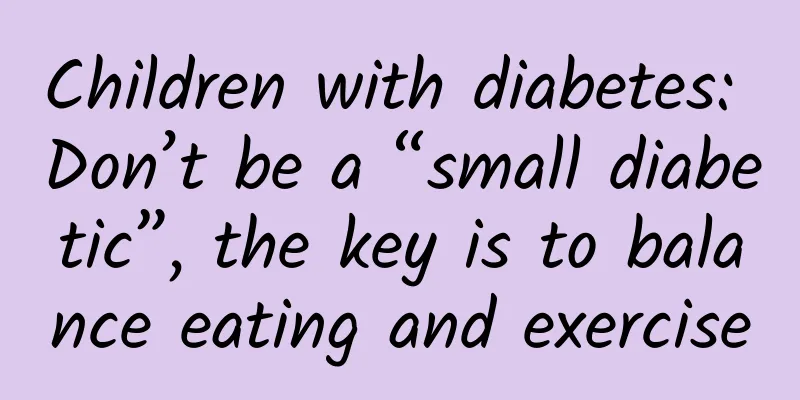How should children scientifically "cold autumn"? Clothes should be worn like this

|
After the National Day holiday, more and more children have been admitted to hospital clinics with colds and coughs. Many parents wonder, "cover up in spring and keep cool in autumn", isn't it good for the body to keep cool in autumn? Why do children catch colds and coughs before they are even cold? How can children keep cool in autumn scientifically? "Autumn freezing" is to increase children's ability to adapt to cold environments through "freezing", thereby strengthening their physical fitness, but it does not mean that children should continue to wear short sleeves and skirts when the weather turns cold. Little do people know that children's ability to regulate body temperature is not yet mature, and they are more susceptible to diseases than adults when the weather is hot and cold. Therefore, there is a saying: "Eighteen basins in the beginning of summer, do not expose your body in the white dew." "Autumn freezing" should not be blind, but should be carried out step by step and scientifically. 1. Adapt to the cold. From the beginning of autumn, parents should gradually cultivate their children's tolerance to cold. Eat a balanced diet, don't blindly "put on weight in autumn", do more outdoor activities, and get more exposure to outdoor air and sunlight to give children more confidence to withstand the cold in autumn. 2. Gradually and moderately, the two principles of exercise should be followed. It is not advisable to carry out high-intensity activities for too long, nor to exercise to the point of sweating profusely. The amount of exercise should be gradually increased when the child can tolerate it and sweats slightly. 3. Pay attention to adding clothes in time. When dressing children, pay attention to keeping the abdomen and feet warm, and do not dress them too thickly or tightly. However, for children with poor physical fitness, repeated colds, or who wear a lot of clothes, do not strictly require that the thickness of clothes be the same as other children. Add clothes in time according to the child's physical fitness, amount of exercise, and weather changes, so that the child has a gradual adaptation process. 4. "Autumn cold" must be different for different people. Children who usually sweat a lot, catch colds repeatedly, have weak lung qi, or have yellow complexion, weight loss, loss of appetite, and spleen and stomach deficiency should pay special attention to the degree of "freezing". If the symptoms of lung and spleen weakness are obvious, it is recommended to first undergo Chinese medicine conditioning. In addition, there are some chronic diseases, such as tics, asthma, allergic rhinitis, adenoids hypertrophy, etc., which often cause recurrence or aggravation of the disease due to colds. Parents should pay special attention to their children to avoid colds. Therefore, strengthening children's physique is not simply "freezing", but more importantly, insisting on exercise, a reasonable diet and appropriate clothing. Tips: Dress your baby like this during the "autumn cold" season Let your baby decide how to dress Avoid the habit of "There is a kind of cold that makes your mother think you are cold"! When we were young, our parents would yell at us to wear layer after layer of clothes. When we had babies, we unknowingly continued this habit. We often see adults still wearing short sleeves on the street, but babies have already put on autumn clothes. Parents are worried that their children will get cold and get sick easily. Anyway, it doesn't matter if they wear one more piece of clothing. It's better to wear it than not to wear it. How much should I wear? Babies under 1 year old should wear one more piece of clothing than their parents; Babies over 1 year old can wear the same clothes as their parents; For children over 3 years old, ask the baby's wishes to add or remove clothes. If the baby is not cold, parents should not force it. Just wait until the baby feels cold before adding more clothes. Wearing too much clothing can sometimes be more harmful than wearing too little. In medicine, there is a term called "heatstroke syndrome", which means a series of symptoms caused by excessive dressing or covering, which results in a lack of heat dissipation. When babies are wrapped in thick clothes, the heat generated cannot be dissipated, and the temperature inside the clothes will get higher and higher, which can easily lead to high fever, dehydration, hypoxia, convulsions, coma, and even respiratory failure. Since we can’t wear too many clothes, does that mean that the “autumn cold” tradition handed down from our ancestors is advisable? What if we get sick from the cold? Parents who have the same problem can learn the onion dressing method. Yes, it is the onion that is so irritating to the eyes. This is also a reminder for parents to add or remove clothes for their babies layer by layer. The innermost layer is a breathable and sweat-wicking underwear. Middle layer, wear warm clothes, such as sweaters, knitted sweaters, etc. As the outermost layer, you can wear a waterproof and windproof jacket. Wearing clothes in layers like this allows air to circulate better between the clothes, making it easier to put on and take off clothes whether it's hot or cold. Please accept the "dressing rules" of autumn The temperature in early autumn is still slightly high, mostly between 24℃ and 27℃. When dressing your baby, you can just change into long sleeves and long pants, and you don’t have to wear a coat. The temperature is a little lower during the Mid-Autumn Festival, so you can put a thin coat or vest on your baby. As the temperature continues to drop in late autumn, your baby's clothing can be increased to include sweaters or thin down jackets. Parents are especially reminded not to buy clothes with strings or straps for babies, especially around the neck, as they can easily get tangled somewhere and cause suffocation. In addition, clothes with zippers are safer than clothes with buttons. Babies love to pick at these small items with holes, and even if they look solid, they may fall off after a few days of picking at them, and they are easy to swallow by mistake. How to tell if your baby is hot or cold? Touch the back of the neck! Now that you know the rules of dressing, how do you judge whether what you are wearing is appropriate? Touch the back of your neck! Yes, it is not what we usually think of as touching the hands and feet. Some elderly people or inexperienced parents think that the baby is cold because they feel the baby's hands and feet are cold. This is wrong, because the baby's peripheral circulation is poor, so the hands and feet are easy to be cold. If the back of your neck feels warm, your clothes fit you well; If the back of your neck feels cold, it means you are not wearing enough clothes; If you sweat on the back of your neck, it means you are wearing too much. Don't touch the exposed back of your neck, touch the area covered by your clothes. |
>>: Milk, soy milk and porridge, which one is better for breakfast?
Recommend
How to remove stretch marks
After ten months of pregnancy, it was finally tim...
How to deal with locust plague? Are chickens useless?
Locusts, also known as grasshoppers, are a very c...
Is it better to wash or not wash the rice for millet porridge? How to wash the rice before cooking millet porridge?
Millet porridge is a common nutritious porridge. ...
Moles grow bigger during pregnancy because of hormones
During pregnancy, women's hormone levels are ...
Normal progesterone levels after ovulation
The progesterone value will be different if it is...
Can women take calcium tablets during confinement?
The confinement period for women is a particularl...
What to do if a breastfeeding mother has stomach pain
During the breastfeeding period, if a new mother ...
Calculation formula for standard height and weight for women
Weight standard is one of the key indicators to r...
What to eat when you have a stomachache during your period
Abdominal pain during menstruation is a symptom o...
This thief of light must be guarded against!
Glaucoma is a general term for a class of disease...
What to do if your face is swollen after double eyelid surgery
Basically, your face will be swollen after double...
Zhuge Dali's Douyu live broadcast is it true? How to enter the Douyu live broadcast room number ID?
After Chengguo's role as Zhuge Dali became po...
A guide to health care during a woman's 28-day cycle
Women's menstrual cycle is directly related t...
What novel is the Taiwanese drama I Want to See You based on? Is the ending of the Taiwanese drama I Want to See You happy or sad?
Before the winter and summer holidays every year,...
Not eating sugar does not mean controlling sugar! Are you still ineffective in controlling sugar?
In such a fast-paced, high-calorie modern lifesty...



![[Medical Q&A] “All medicines are poisonous”, will folic acid supplementation also cause harm?](/upload/images/67f0f98a373f5.webp)





